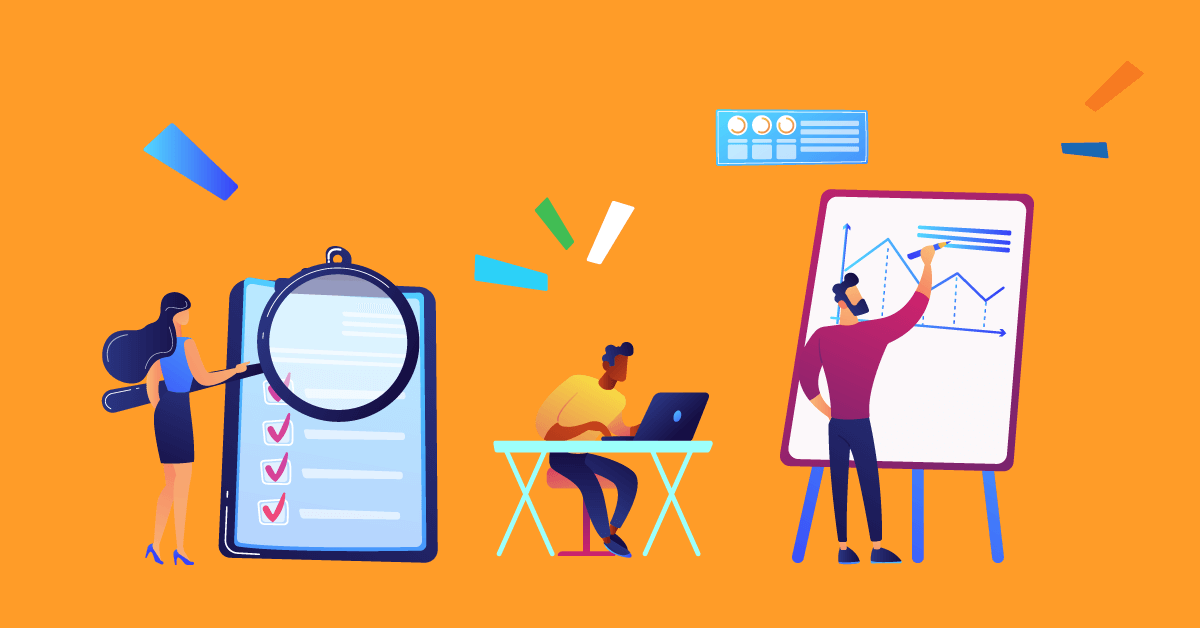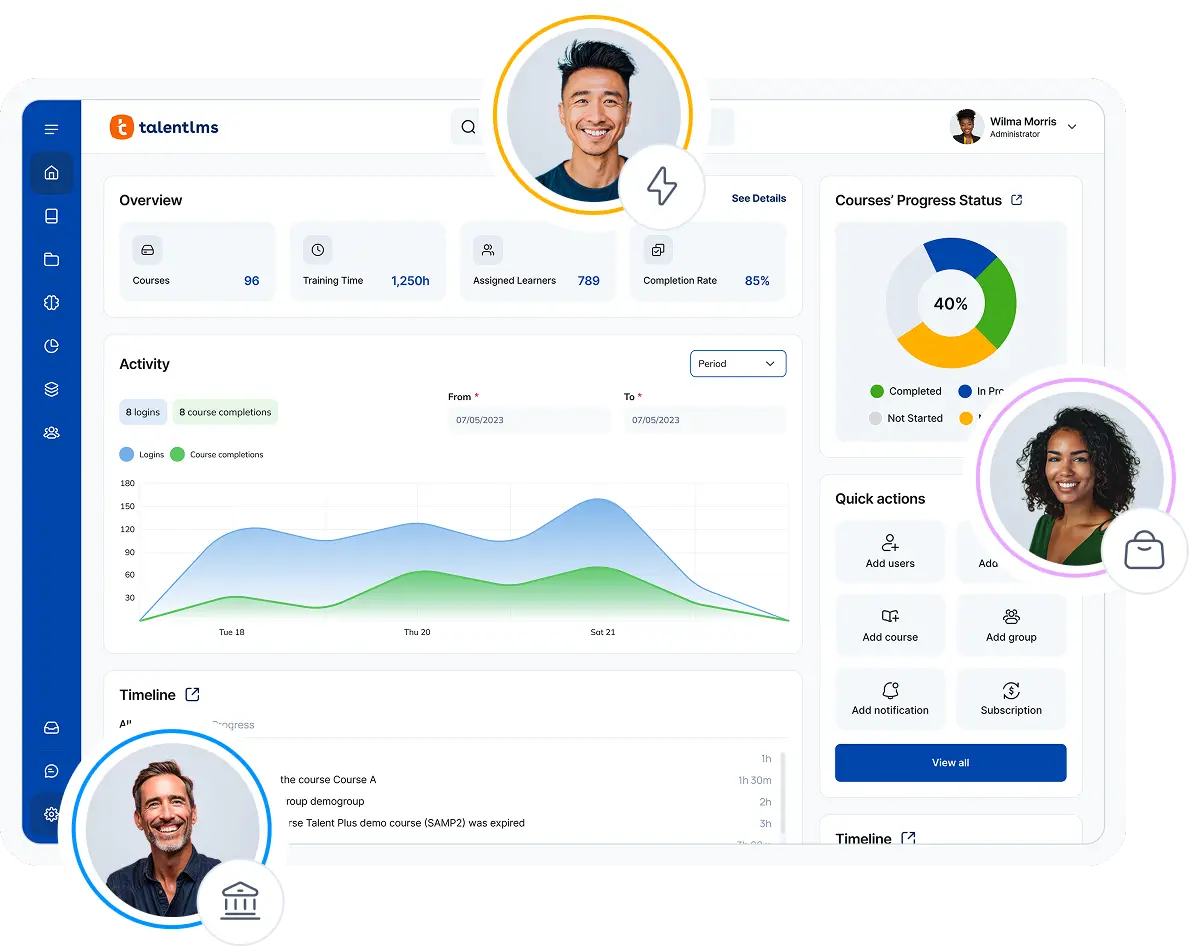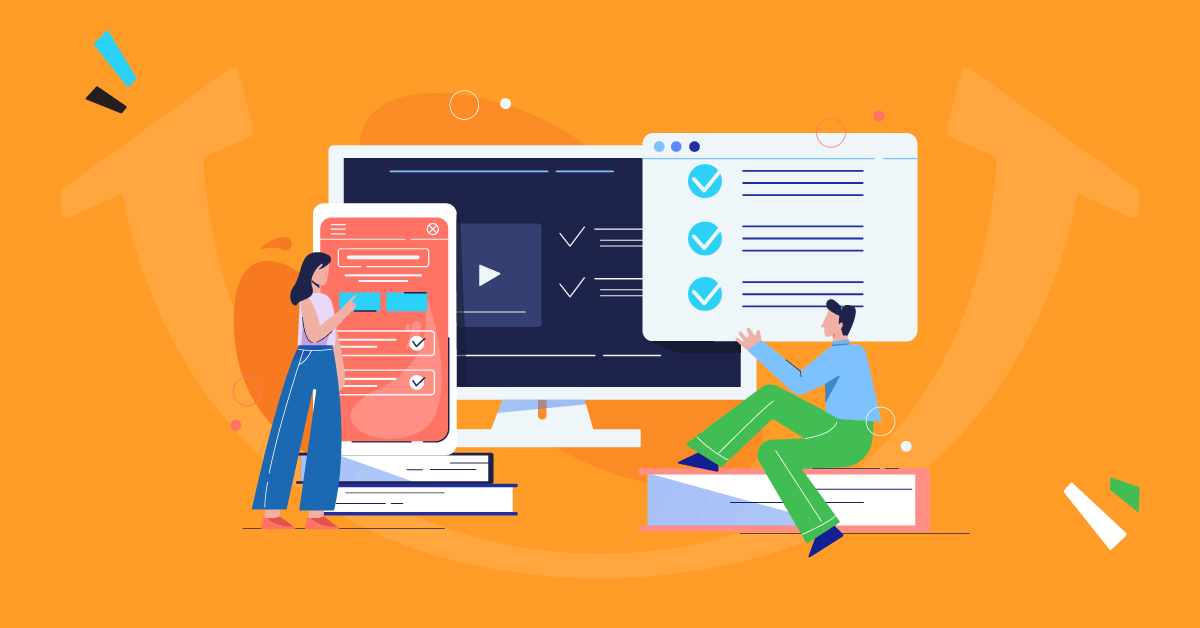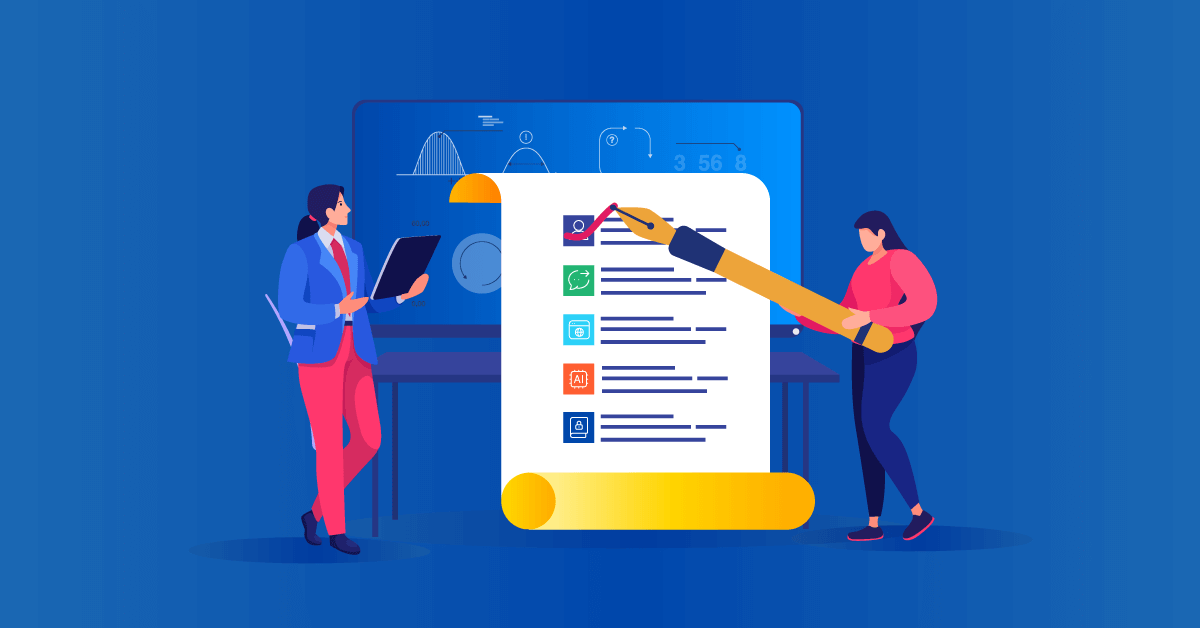Setting and noting down training objectives may be the most significant, yet most overlooked phase of the training and development cycle. True, it’s not the most glamorous part of L&D. Often seen as a tick-box exercise, creating effective training objectives is often pushed down on the list of priorities.
Effective training objectives, though, set your courses up for success. And they lead to better outcomes for employees and employers.
So, how do you develop training objectives and communicate training goals that intrigue and resonate with employees? You start with a clear understanding of the purpose and power of effective training objectives and work from there.
What are the characteristics of effective training objectives?
Training objectives are clearly defined, measurable goals that outline what learners are expected to achieve by the end of a training program. They provide a focused framework for both trainers and participants. And they ensure that training programs align with the desired skills, knowledge, or behaviors to be developed.
Training goals vs training objectives
Training goals
Broad, overarching statements, training goals define the general purpose and desired outcomes of a training initiative. They answer the “why” of the training by focusing on the big picture, such as improving team collaboration, enhancing leadership skills, or increasing overall productivity. Training goals are often aspirational, providing a high-level view of what the organization hopes to achieve through the training.
Training objectives
Specific and actionable, training objectives break down broader goals into precise, measurable outcomes that participants are expected to achieve by the end of the training. Training objectives answer the “what” and “how” of the training, outlining the exact skills, knowledge, or behaviors to be developed. For example, while a training goal might be to “improve customer service,” an objective could be “train employees to resolve customer complaints within a 24-hour timeframe using conflict resolution techniques.”
In short, training objectives provide the roadmap to achieving the broader training goals, ensuring clarity and focus in the learning process.
The benefits of training objectives
Before you start creating training objectives, figure out what you want to achieve through training programs. Whether it’s L&D for customer service representatives or leadership training initiatives, most of the benefits and objectives of employee training are universal. These include:
- Employee retention. Modern employees are known for their job-hopping tendencies, often resulting from inadequate career development opportunities. Employee training and career growth are closely intertwined.
- Future-readiness. Skilled employees are confident, optimistic, and ready for the future workplace and any challenges it may bring. Employee reskilling and upskilling are currently top priorities among companies that want to safeguard their position in the market and adopt the latest technologies and work trends.
- Better employee performance. This training goal is obvious but critical, so it needs to be mentioned nonetheless. The primary goal of training is to reinforce existing skills and competencies so that employees become more productive. These competencies range from using digital tools for everyday tasks to mastering the latest sales techniques.
- Better services and products. A company is as good as its employees. The most brilliant ideas will fail if they’re not executed well. Your employees are the ones bringing these ideas to life and those who will ultimately define the quality of your offerings.
TalentLibrary – Skills that matter, courses that deliver
With TalentLibrary, you set the foundation for a strong, aligned workforce—soft skills, compliance, and workplace essentials, from day one (and beyond).
Keep in mind that different training and development programs need to accomplish different outcomes, and will often have different types of learning or training objectives. These range from cognitive and psychomotor to affective and social.
Understanding the reasons behind your training process will help you to better communicate your development objectives. And lead to better long-term training effectiveness.
The four objectives of training
The four main training objectives in an organization are to:
- To gain new knowledge or information to help every employee perform their job roles effectively
- To learn physical skills, for example like physical machinery quickly and efficiently
- To influence employee attitudes and perceptions toward learning or organizational change
- To develop social skills, like leadership or teamwork abilities
Whatever the reason behind your training, it’s important that you spend time setting training objectives that are easy to measure, relevant to your business objectives, and realistic to achieve. Which leads us to the most important part of the process: learning how to write effective training objectives.
How to write training objectives: 5 tips
Once you’ve identified your training aims, it’s time to put them down on paper and create training objectives. These will be not only the building block of your training course but also your most convincing marketing material.
Does writing the objectives of training intimidate you? It shouldn’t do. These five tips will help you create effective, realistic, and measurable objectives for employee training like a pro. You’ll also find some examples for inspiration.
1. Make the purpose of the training program clear
What do you want to accomplish with your training program? Improve employee performance? Address a knowledge gap? Teach new employee skills that will make your company more competitive? Whatever the case may be, you need to make sure that the purpose of the training is clear.
Remember that training programs do not just come out of thin air. There is always a reason why training needs to take place. A training needs analysis will uncover skills and knowledge gaps among your employees and point you in the right direction. Once you’ve identified your training needs and decided on the purpose of training, you’ll find it easier to create and write training objectives.
2. Define expected training outcomes
Training outcomes are the measurable goals learners are expected to achieve at the end of a training program. Outcomes determine the success (or failure) of your training strategy since you’ll evaluate training based on whether or not your teams have reached these outcomes.
When writing down the desired training outcomes, make sure you’re specific and leave nothing to interpretation. Avoid using vague words like “understand”, “realize”, and “learn”. Use verbs that show tangible and observable action instead, like “create”, “demonstrate”, and “calculate”. Using concise vocabulary will also help bring your point home and convince employees about the usefulness of training. So don’t just say “During this course, you will learn the basic functions of Excel.” A better-phrased, and more effective, training objective would be “After completing this course, you will be able to create and modify Excel files”.
3. Put conditions into great consideration
When formulating training objectives you must take into consideration several parameters that will affect the design and delivery of your training program. For example, the availability of a qualified instructor or venue can determine the way you deliver training. So will the type of your workforce (are they in-house or remote employees?) and your budget.
Take into account prerequisites, as well. Very often, learners might need to have a baseline knowledge of a subject or some familiarity with a skill to join a course. Don’t take for granted that they do and create impossible training aims. These parameters can, and will, play a big part when designing and implementing your training program.
Find out where you stand, take these conditions and limitations seriously, and create your objectives for training accordingly.
4. Align training objectives with business goals
Training objectives need to be grounded on observable, measurable outcomes. These outcomes, in turn, have to be based on certain criteria, usually key performance indicators or skill levels. Why Because the fundamental goal of training is to produce business results. So, unless the objectives of employee training are based on business metrics, training will be a waste of time and resources. An effective and relevant training program is one that aligns training goals with business goals.
5. Write down your training aims using the SMART format
The SMART format has been the go-to standard when it comes to setting any type of objective – training or otherwise. Creating smart training objectives can be summed up in five letters, and these are:
S – Specific
Training goals need to be specific and narrow. Who will gain what skills, and for which purpose? Focus on one specific skill or knowledge for each training objective.
M – Measurable
Secondly, learning outcomes need to be measurable. This means that the newfound skill or knowledge should be able to be measured in specific terms, e.g., a 5% increase in quarterly sales.
A – Attainable
Attainable means that the objectives of training are realistic given the amount of time and resources available. For example, you cannot expect learners to master a complex skill given just thirty minutes or one hour of training.
R – Relevant
Being relevant means your training aims answer the “Why?” question. Always remember WIIFM (“What’s in it for me?”). Learners need to know why they are in training and what they can get out of it. Will the skills or knowledge they’re going to gain help them perform better at work? Will they be able to use these new skills in actual work scenarios?
T – Time-bound
The time-bound element answers the question, “When?”. There is a saying that a goal without a deadline is just a dream. The same applies to training aims. The deadline is usually set at the end of the training program. Of course, in some cases, further practice might be required.
But how do you create effective learning objectives? Here are examples of vague learning goals converted into SMART training objectives:
- Vague: “Learners will understand the SMART format.”
- SMART: “At the end of the session (Time-bound, Attainable), supervisors will be able to create (Measurable), SMART goals (Specific) for their respective teams (Relevant).”
- Vague: “Participants will learn how to operate the new system.”
- SMART: “At the end of the session (Time-bound, Attainable), the participants will be able to process sales orders (Specific, Measurable) on the new CRM system (Relevant).”

SMART training objectives examples
Business objectives should be SMART. That’s specific, measurable, attainable, relevant, and time-bound. And so, training objectives should be SMART, too. If they’re not, your training isn’t going to be perfect.
We know that showing is often better than telling, so here are some SMART training objectives that align with the hypothetical business objective to halve production time.
- Upskill the operations manager to increase production line efficiencies and reduce production time by 25% within the next 6 months.
- Train the production team in machinery handling and operating to reduce production time by 25% within the next 6 months.
Both of these training objectives are specific (production line efficiencies and machinery handling), measurable (25%), attainable (possible to action through training), relevant (they support the business objective), and time-bound (6 months).
How to develop effective learning objectives with Bloom’s taxonomy
Bloom’s taxonomy is often used to create SMART training objectives. Developing learning objectives with Bloom’s taxonomy involves creating measurable, action-oriented goals that guide learners through six hierarchical stages of knowledge acquisition.
The six stages of knowledge acquisition
- Starting with knowledge or remembering, learners focus on recalling facts using verbs like “memorize” and “identify,” This stage is particularly useful for areas like compliance training.
- Next is comprehension, where understanding is demonstrated through actions such as “explain” or “summarize.”
- The application stage follows ensures learners can put what they’ve learned to use in real-world scenarios. Verbs like “apply” and “perform” come into play here.
- In analysis, learners break down and evaluate the relationships within the material, employing actions such as “compare” and “model.”
- At the evaluation stage, learners are challenged to critique and assess the material’s validity and relevance using terms like “judge” and “argue.” Other action words could be: critique, assess, score, and evaluate. Feedback and interactions between employees and trainers are a good way of incorporating this into corporate training. You could also use chat rooms or discussion forums built into an LMS.
- Finally, the creation phase encourages learners to synthesize their knowledge into new products, plans, or proposals, utilizing verbs such as “design” and “invent.” This structured approach ensures clear and progressive learning outcomes.
Conclusion
What’s in it for me (and my employer)?
Training objectives tie a training program with actual business results. Establishing clear, realistic, improved performance and measurable training goals at the onset of the training development process will play a big part in ensuring the success of your course. Clear-cut training aims not only to answer the audience’s intent “What’s in it for me?” (WIIFM). They also link training with company goals and measurable outcomes. A lot actually depends on these goals; so do the smart thing—and make them SMART!
Originally published on: 22 Nov 2017 | Tags: Learning Goals & Objectives




